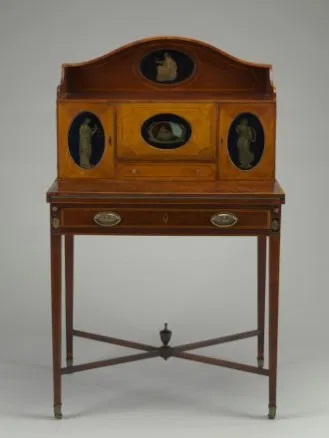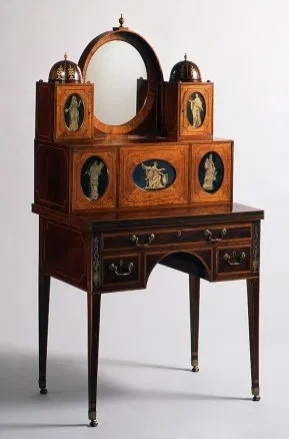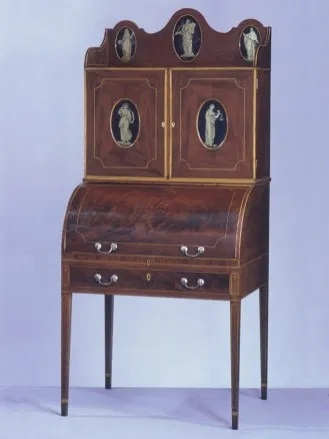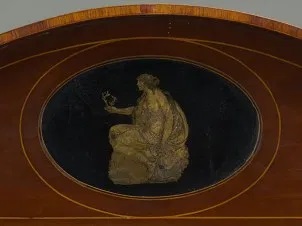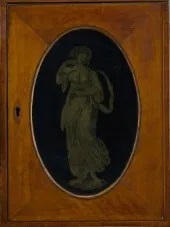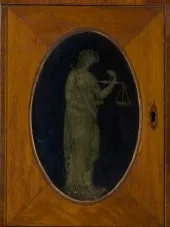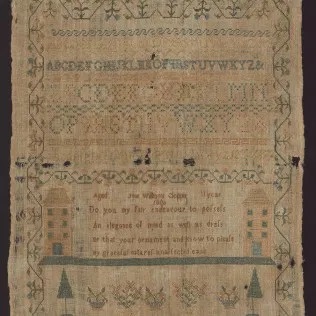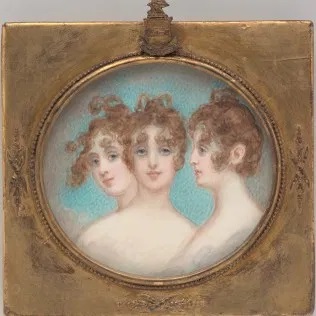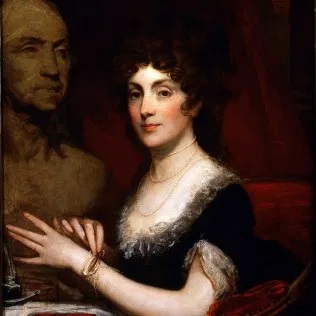Fit for a Virtuous Woman: A Neoclassical Lady’s Writing Desk from Baltimore
Matthew A. Thurlow, Executive Director, Decorative Arts Trust
N.B. The following post is abstracted from Matt’s lecture during the 2016 Colonial Williamsburg Antiques Forum.

“Keep within Compass,” Engraving, c. 1795, Courtesy of Winterthur Museum, Garden & Library, Gift of Henry Francis du Pont, 1954.0093.001 A
Prescriptive literature is a well-known component of popular culture in the 18th and 19th centuries. Innumerable treatises were written with titles such as Advice to a Lady (1731) to persuade young women to toe a straight line with their behavior and deportment. These essays were often accompanied by illustrations that underscored these themes and were reinforced with printed pamphlets akin to the Keep within Compass circular (c. 1800) shown below. Might a piece of furniture made in that period also have been intended to remind its user to seek out a path of virtue and, thus, be classified as prescriptive?
Three related desks made in Baltimore in the first decade of the 19th century appear to fit this bill. Neither signed nor labeled by their makers, these elegant, neoclassical objects are united by the incorporation of striking verre églomisé panels of gilt figures on a deep blue background. These exquisite desks represent the pinnacle of cabinetmaking through their exceptional design, materials, and construction. At the time Baltimore was emerging as a leading economic and cultural center, American cabinetmakers were also tasked with producing an increasing variety of specialized forms, including sideboards, knife boxes, sewing tables, and lady’s writing desks.
Lady’s Writing Desk, c. 1805, Baltimore, MD, Courtesy of the Baltimore Museum of Art, Gift of Maria Groome Tracy, 2000.378
Lady’s Writing Desk, c. 1805, Baltimore, MD, Courtesy of Winterthur Museum, Garden & Library, Museum Purchase, 1957.0068
While the ladies featured in the églomisé panels are wearing the Grecian dress au courant in this period of fascination with the antique, they are much more than mere tokens of neoclassical style, such as the ubiquitous bellflowers, swags, and garlands found on contemporary cabinetwork. The figures depicted are allegories of Honor, Temperance, and Justice as well as the Roman goddess Diana, who represents loyalty. Within the mirrored central reserve behind Diana sits a marquetry shell of oak leaves and acorns, symbols of strength and fertility.
When considered as a whole, this selection of virtues was intended to remind the desk’s user of the behavior, responsibility, and duty often expected of young women and emphasized through the pages of prescriptive literature. Such expectations were further reiterated in the verses selected for needlework samplers rendered by girls in early-19th-century Maryland. For instance, Baltimorean Jane Clopper’s 1806 sampler reads: “Do you my Fair endeavor to possess / An elegance of mind as well as dress / Be that your ornament and know to please / By graceful nature unaffected ease”, lines from the aforementioned Advice to a Lady.
Sampler, Jane Clopper, 1806, Baltimore, MD, Courtesy of Winterthur Museum, Garden & Library, Museum Purchase with funds provided by the Odessa Acquisition Fund, 1992.17.
Elizabeth Patterson Bonaparte, Thomas Sully after Gilbert Stuart, 1805-10, Courtesy of the Metropolitan Museum of Art, Purchase, Dodge Fund and funds from various donors, 2000.359.
Against these traditional bounds of gender a remarkable collective of women emerged in the post-Revolutionary era. From Baltimorean Elizabeth Patterson Bonaparte, who created tremendous controversy for her risqué dress and unabashed pursuit of celebrity, to Sarah Apthorp Morton, a celebrated poet and critic, these ladies’ efforts to challenge the status quo likely resulted in the decision to reinforce cultural mores through prescriptive objects like these expensive furnishings.
The Baltimore Museum of Art’s desk was commissioned for Rachel Ringgold Ringgold by either her father, William Ringgold, or husband and first cousin, Samuel Ringgold. While we might expect such an urbane object was destined for a recently constructed house on one of Baltimore’s tony streets, the Ringgold’s home, Rose Hill, was built in the 1760s near Chestertown in rural Kent County on Maryland’s Eastern Shore. After purchasing the dwelling at the turn of the 19th century, the Ringgolds subdivided a spacious front gallery into a parlor and drawing room finished with neoclassical ornament. Rachel’s desk was likely exhibited in the latter.
Like sewing tables and other types of gendered objects designed for women, Rachel’s gift straddled a line between public and private spheres. Placed on prominent display in the Ringgold’s home, Rachel’s impressive writing surface demonstrated her family’s wealth and taste while also inferring her chaste behavior and honorable demeanor. Yet this desk was also designed for the most intimate of activities: contemplation and correspondence, whereby her thoughts were developed, distilled, and transcribed. While perhaps facilitating the process of dress, the interior mirrored cabinet more significantly reinforces the functions of self-reflection and display.
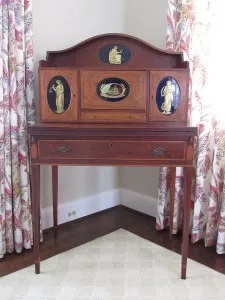
Lady’s Desk, c. 1880, Baltimore, MD, Private collection.
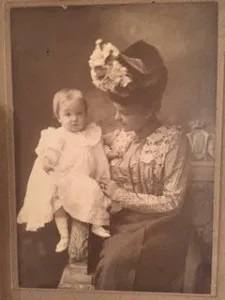
Mary Koppelman Baetjer, c. 1890, Private collection.
Another compelling chapter in the story of Rachel’s desk is the production of numerous copies in the late 19th century, thereby suggesting a continuing appreciation of the aesthetics of the form if not the message it portrays as well. There were a number of talented cabinetmakers working in Baltimore in the late 1800s, and clearly one of them had access to Rachel’s desk. In 1961, a reproduction was presented as a gift to the White House at the outset of Jackie Kennedy’s campaign to bring exceptional examples of American decorative arts for display at the president’s home. The following year, it was discovered to be out of period and quickly returned to the donor. Another example remains in Baltimore in the hands of a descendant of the original owner, Mary Koppelman Baetjer. While the desk appears to be genuine at first glance, the lesser quality of the construction and inlay, as well as the recognition that all of the églomisé images are reversed, confirm its later production date. Mary likely received the desk as a gift from her adoring brother Charles, who collected art and antiques, in recognition of his sister’s “graceful nature [and] unaffected ease.”
About The Decorative Arts Trust Bulletin
Formerly known as the "blog,” the Bulletin features new research and scholarship, travelogues, book reviews, and museum and gallery exhibitions. The Bulletin complements The Magazine of the Decorative Arts Trust, our biannual members publication.








